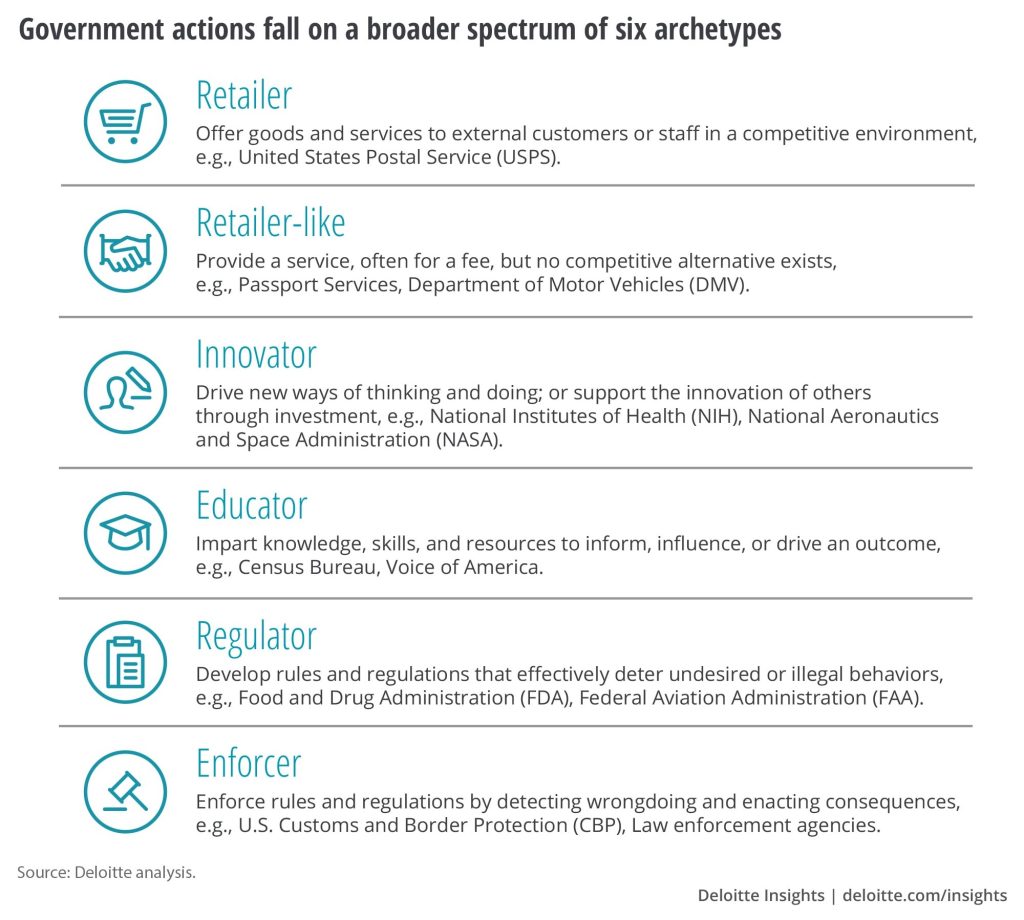Building trust with constituents is difficult. It means establishing and maintaining relationships as you carry out your agency’s mission. Among other variables, there is an ever-present challenge: the mind-boggling task of playing many different roles in people’s lives. The relationships they experience through interactions with federal, local and state agencies can vary so much.
What roles do you and your agency have? It’s a question worth asking, and it may lead to insights that help you develop a better relationship with the public.
In an article about rebuilding trust in government, Deloitte Insights broke down government work into six archetypes: retailer, retailer-like, innovator, educator, regulator and enforcer. The article explains that agencies can fall anywhere on the spectrum, and “depending on their position, will have different relationships with their constituents.”

While you may be able to identify an agency or position as largely one of these roles, agencies and individuals could also play multiple roles. For example, when your agency debuts a new innovation to help constituents, there will be some education involved during the preparation and rollout, and some retailer-like tasks, or maybe even some regulator-like duties to guide constituents in their use of your services.
It will help — in your dealings with constituents and even with internal and external colleagues — to consider how your position could require stepping into one of these roles, even if you spend most of your time in a different one. Each type requires different interactions and interpersonal skills, and the methods for building trust with constituents and among colleagues will vary.
Deloitte examines each one through four different “trust signals”— humanity, transparency, capability and reliability — that relate to how the public perceives government. According to Deloitte:
- Humanity addresses the perception that the government genuinely cares for its constituents’ experience and well-being by demonstrating empathy, kindness, and fairness.
- Transparency indicates that the government openly shares information, motives, and choices related to policy, budget, and program decisions in straightforward language.
- Capability reflects the belief that the government can create high-quality programs and services and has the ability to meet expectations effectively.
- Reliability shows that the government can consistently and dependably deliver high-quality programs, services, and experiences to constituents across platforms and geographies.
An agency can build strategies to improve its performance in these areas, often by using new technology that assists in service delivery. Supporting processes that foster positive, productive relationships with constituents helps your agency, no matter what archetype you fall under.
As you identify the trust signals that matter most to your agency’s roles — and as you design or reposition technology for them — check out a few GovLoop resources to better serve and connect with constituents:
6 Ways to Make Digital Services More Accessible
7 Ways to Bridge the Divide and Increase Constituent Engagement: Tips & Takeaways
8 Steps Toward Achieving Operational Excellence
How Agencies Can Stay on the Cutting Edge in 2024 and Beyond
Your Guide to Becoming an Adaptive Agency





Leave a Reply
You must be logged in to post a comment.